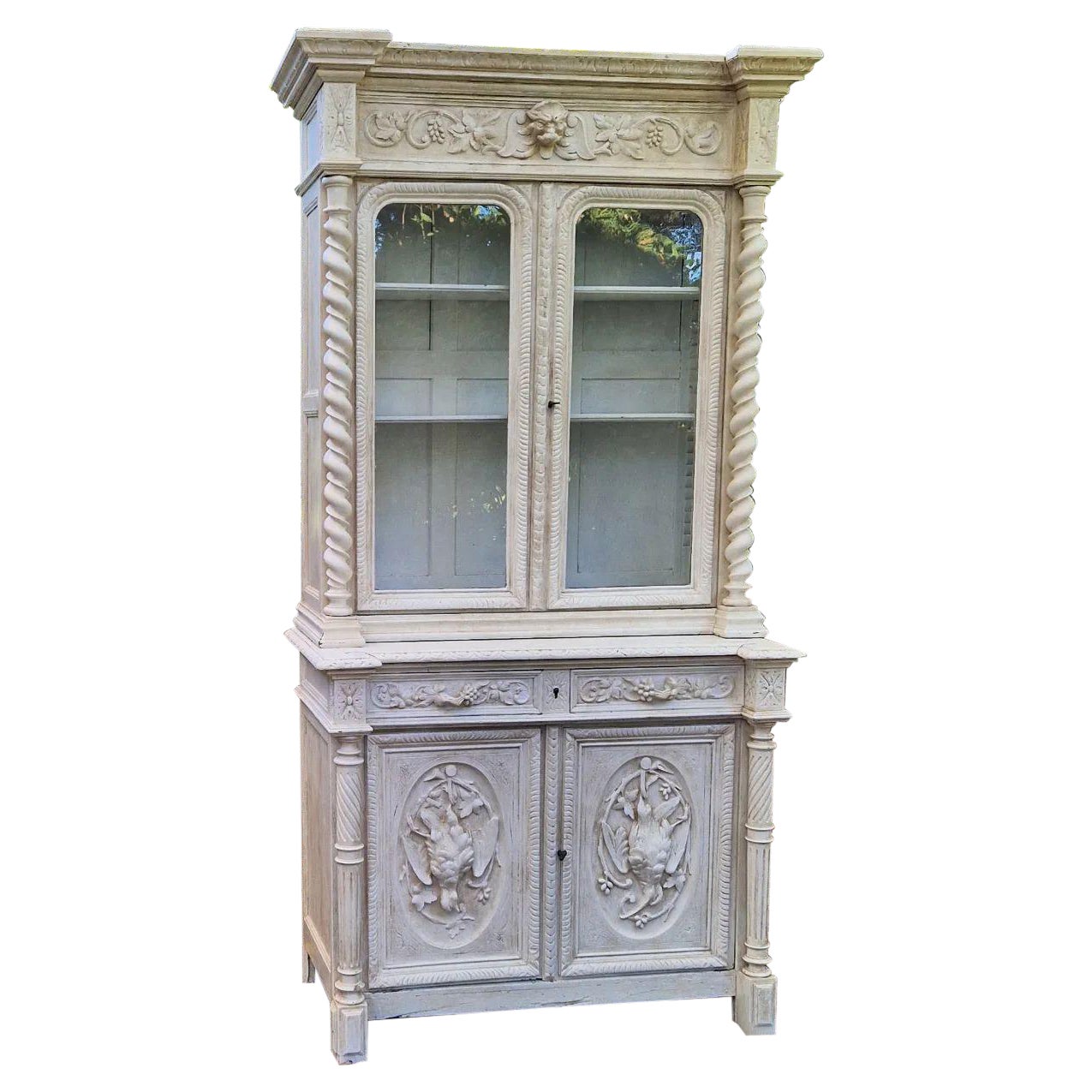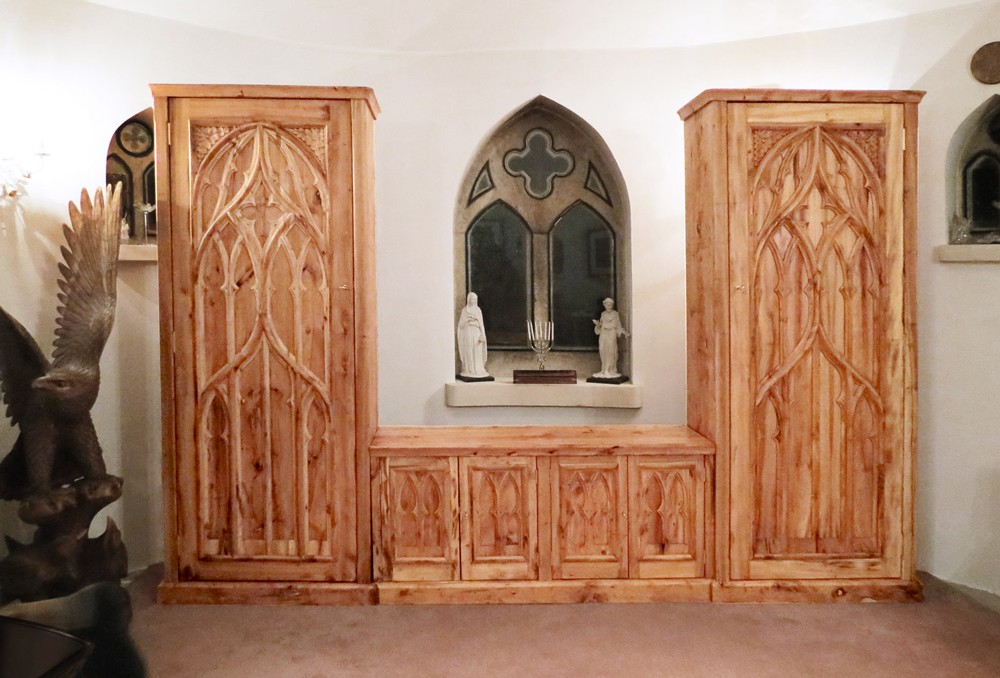The Allure of Gothic Cabinetry: Gothic Cabinet Craft Custom Work
![]()
Gothic architecture, a style that emerged in Europe during the Middle Ages, left an indelible mark on art, design, and culture. Its distinctive features, characterized by soaring arches, intricate carvings, and stained glass windows, inspired a unique aesthetic that extended beyond cathedrals and churches to influence furniture design. Gothic cabinetry, a testament to this enduring legacy, embodies the spirit of this era, capturing its grandeur and sophistication.
Gothic Cabinetry: A Fusion of Style and Functionality
Gothic cabinetry is a captivating blend of artistry and practicality. Its distinctive elements, derived from the architectural style, seamlessly translate into furniture design, creating pieces that are both visually striking and functionally sound. The pointed arches, a hallmark of Gothic architecture, are often incorporated into the design of cabinet doors and frames, adding a sense of verticality and grandeur. Intricate carvings, inspired by nature and religious motifs, adorn cabinet surfaces, showcasing the craftsmanship and artistry of the period. Stained glass, a quintessential feature of Gothic cathedrals, is sometimes incorporated into cabinet doors, casting ethereal patterns of light and color.
Notable Examples of Gothic Cabinets
Gothic cabinets have been crafted throughout history, each piece reflecting the unique style and artistry of its era. Here are some notable examples:
- The “Tres Riches Heures du Duc de Berry” Cabinet: This exquisite cabinet, created in the 14th century, is a masterpiece of Gothic craftsmanship. It features intricately carved panels depicting scenes from the Bible and daily life, showcasing the skill of the period’s artisans. The cabinet’s elaborate design and intricate details reflect the opulent nature of the era.
- The “Waddesdon Manor” Cabinet: This stunning cabinet, crafted in the 16th century, is a prime example of the influence of Gothic architecture on furniture design. Its pointed arches, intricate carvings, and stained glass panels evoke the grandeur of Gothic cathedrals. The cabinet’s rich wood and ornate details demonstrate the artistry of the Renaissance period.
The Craft of Custom Gothic Cabinetry

Gothic cabinet craftsmanship is a meticulous art that combines traditional techniques with modern innovation. Each piece is a testament to the dedication and skill of the artisan, resulting in unique and timeless creations.
Materials and Techniques
The choice of materials plays a crucial role in defining the character of a Gothic cabinet.
- Hardwoods: Oak, cherry, walnut, and mahogany are favored for their durability, rich grain patterns, and ability to hold intricate carvings.
- Softwoods: Pine and cedar, while less durable, are often used for decorative elements like moldings and accents.
- Metal: Iron, brass, and bronze are incorporated for hardware, hinges, and decorative accents. These materials add a touch of elegance and durability.
Gothic cabinet makers employ a range of techniques to achieve the desired aesthetic.
- Hand Carving: This intricate art form is used to create elaborate details, such as pointed arches, floral motifs, and grotesque figures.
- Woodturning: This technique is used to create decorative elements like finials, spindles, and drawer pulls.
- Inlay: This technique involves embedding different types of wood, bone, or metal into the surface of the cabinet to create intricate patterns.
- Gilding: Applying gold leaf or gold paint to enhance the cabinet’s visual appeal and add a touch of luxury.
Designing and Creating Custom Gothic Cabinets
The process of designing and crafting a custom Gothic cabinet is a collaborative effort between the artisan and the client.
- Measuring: The artisan meticulously measures the space where the cabinet will be placed to ensure a perfect fit.
- Sketching: The artisan creates detailed sketches of the proposed design, incorporating the client’s preferences for style, size, and features.
- Carving: The artisan uses hand tools or CNC machines to carve intricate details into the wood.
- Assembly: The individual components are carefully assembled using traditional joinery techniques.
- Finishing: The cabinet is sanded, stained, and lacquered to enhance its beauty and durability.
Finishes and Embellishments
Gothic cabinets are often adorned with intricate finishes and embellishments that enhance their visual appeal and reflect the unique character of the piece.
- Hand-Painted Details: Artists use paints to create delicate floral motifs, geometric patterns, or scenes from mythology.
- Metal Accents: Iron, brass, or bronze accents are used to create hinges, handles, and decorative elements.
- Inlaid Woods: Different types of wood are inlaid into the surface of the cabinet to create intricate patterns and textures.
- Gilding: Gold leaf or gold paint is applied to create a luxurious finish and enhance the visual appeal of the cabinet.
The Art of Gothic Cabinetry

Gothic cabinetmaking is an art form that combines intricate design, meticulous craftsmanship, and a deep appreciation for history and tradition. The creation of a Gothic cabinet is a journey that begins with a concept and culminates in a masterpiece that will stand the test of time.
Designing a Gothic Cabinet, Gothic cabinet craft custom work
The design process is the foundation of any successful Gothic cabinet project. It involves careful consideration of the client’s vision, the intended use of the cabinet, and the desired aesthetic. The following steps Artikel the key elements of designing a custom Gothic cabinet:
- Define the Purpose and Style: The first step is to determine the cabinet’s intended use, such as storage for books, collectibles, or clothing. Once the purpose is established, the designer can select a Gothic style that complements the intended function. Styles include Early Gothic, High Gothic, and Late Gothic, each characterized by distinct architectural elements and decorative motifs.
- Determine Dimensions and Materials: The size of the cabinet should be determined based on its intended use and the available space. Common materials for Gothic cabinetry include hardwoods like oak, walnut, cherry, and mahogany. The choice of wood will influence the overall aesthetic and durability of the cabinet.
- Incorporate Gothic Architectural Elements: Gothic architecture is characterized by pointed arches, intricate tracery, and decorative details. These elements can be incorporated into the cabinet’s design, such as arched doors, pointed windows, and decorative moldings.
- Choose Decorative Elements: Gothic cabinet designs often feature intricate carvings, stained glass, and metalwork. These decorative elements can be used to enhance the cabinet’s aesthetic appeal and create a sense of history and tradition.
Constructing a Gothic Cabinet
The construction of a Gothic cabinet is a meticulous process that requires precision and skill. The following steps provide a detailed guide for building a custom Gothic cabinet:
- Prepare the Materials: Begin by carefully selecting and preparing the wood for the cabinet. This involves milling the wood to the required dimensions, ensuring it is free of knots and defects, and allowing it to acclimate to the workshop environment.
- Create the Frame: The cabinet’s frame is the foundation for the entire structure. This involves cutting and joining the wood to form the sides, top, bottom, and back of the cabinet. The joints should be strong and secure, ensuring the frame is stable and durable.
- Construct the Doors and Drawers: The doors and drawers are essential components of a Gothic cabinet. They should be designed and built to complement the overall style of the cabinet. Gothic doors often feature arched tops, intricate carvings, and decorative hardware.
- Incorporate Decorative Elements: Once the basic structure is complete, the decorative elements can be added. This includes carving intricate patterns into the wood, adding stained glass panels, and incorporating metalwork details.
- Finish the Cabinet: The final step is to finish the cabinet. This involves sanding the wood to a smooth finish, applying a protective sealant, and adding a final layer of stain or paint. The finishing process should enhance the natural beauty of the wood and create a durable and long-lasting surface.
The Importance of Quality Craftsmanship
Quality craftsmanship is paramount in creating a truly exquisite Gothic cabinet. Every detail, from the selection of materials to the finishing touches, contributes to the overall aesthetic and longevity of the piece. Attention to detail ensures that the cabinet will not only be beautiful but also functional and durable for generations to come.
“A Gothic cabinet is not simply a piece of furniture, it is a work of art that reflects the skill and artistry of the craftsman.”
Gothic cabinet craft custom work often involves intricate details and a focus on functionality. This same attention to detail can be applied to a custom kitchen pantry cabinet , ensuring maximum storage space and aesthetic appeal. The skilled craftsmanship of gothic cabinet makers translates seamlessly to creating pantry cabinets that are both beautiful and practical, offering a timeless elegance to any kitchen.
Gothic cabinet craft custom work often involves intricate details and unique designs, reflecting the craftsmanship and artistic vision of the maker. For those seeking a more contemporary approach to storage solutions, a lifetime modular storage cabinet can provide a practical and adaptable option.
This type of cabinet allows for flexibility and customization, offering a blend of functionality and aesthetics that can complement a variety of home styles.